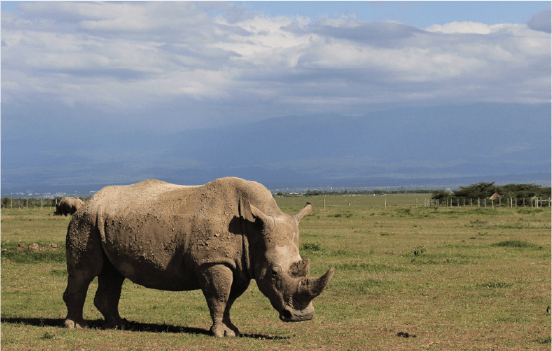Applications
Animal Conservation

The number of animal species around the world has yet to be accurately quantified. This is due to unidentified species that inhabit inaccessible environments and are microscopic; sampling and characterization prove to be difficult. Since the starting number (~1.9 million species have been identified so far) is defined, the number of species lost each day cannot be reliably measured.
Several species have already been extinct naturally since the time the animal kingdom emerged on Earth. This natural background or baseline rate is estimated at one species per million species. However, anthropogenic factors have caused a much faster rate of extinction of species in recent years – over 100-1000 times baseline rate. The main factor that is causing this accelerated extinction rate is habitat destruction fueled by human expansion and development. Other related anthropogenic factors include climate change, over-harvesting, introduction of non-native species, and pollution.
Yearly, the International Union for Conservation of Nature (IUCN) conducts an extinction risk assessment to publish IUCN Red List of Threatened species categorizing them nine categories:
- Extinct - No reasonable doubt that the last individual has died
- Extinct in the Wild - Surviving individuals only survive in cultivation, captivity, or as a naturalized population
- Critically Endangered - Meets all five IUCN criteria for Critically Endangered; extremely high risk of extinction in the wild
- Endangered - Meets all five IUCN criteria for Endangered; very high risk of extinction in the wild
- Vulnerable - Meets all five IUCN criteria for Vulnerable; high risk of extinction in the wild
- Near Threatened - Close to qualifying for criteria set for Critically Endangered, Endangered or Vulnerable
- Least Concern - Does not qualify for criteria set for Critically Endangered, Endangered, Vulnerable, or Near Threatened; widespread and abundant species included in this category
- Data Deficient - Inadequate information for making a direct or indirect risk assessment for extinction
- Not evaluated - Not evaluated against any criteria
Listed below are some of the species being supported by World Wildlife Fund (WWF) for protection and their corresponding IUCN category and population.
| Species | Status | Population |
|---|---|---|
| Tiger (Panthera tigris) | Endangered | ~3,900 |
| Polar Bear (Ursus maritimus) | Vulnerable | 22,000-31,000 |
| Giant Panda (Ailuropeda melanocula) | Vulnerable | 1,864 |
| Amur Leopard (Panthera pardus orientalis) | Critically Endangered | >84 |
| Orangutan (Pongo abelii, Pongo pygmaeus) | Critically Endangered | 104,700 (Bornean), 13486 (Sumatran), 800 (Tapanuli) |
| Sea turtle (Cheloniidae and Dermochelyidae families) | Vulnerable | No available data |
| Chimpanzee (Pan troglodytes) | Endangered | 172,000-299,700 |
| African elephant (Loxodonta africana) and Asian elephant (Elephas maximus indicus) |
African (Vulnerable) Asian (Endangered) |
African (415,000) Asian (<50,000) |
| Plains bison | Near Threatened | 20,504 |
| Vaquita (Phoenica sinus) | Critically Endangered | 30 |
|
Black rhino (Diceros bicornis), Greater one-horned rhino (Rhinoceros unicornis), Javan rhino (Rhinoceros sondaicus), Sumatran rhino (Dicerorhinus sumatrensis), and White rhino (Cerarotherium simum) |
Black (Critically Endangered), Greater one-horned (Vulnerable), Javan (Critically Endangered), Sumatran (Critically Endangered), White (Near Threatened) |
Black (~5,000), Greater one-horned (>3,500), Javan (58-68), Sumatran (80), White (>20,000) |
| Gorilla (Gorilla gorilla and Gorilla beringei) | No available data | 100,000-200,000 |
| Whale (Balaenoptera, Balaena, Eschrichtius, and Eubalaen) | Endangered | 300 North Atlantic whales, 10-90,000 for other species |





